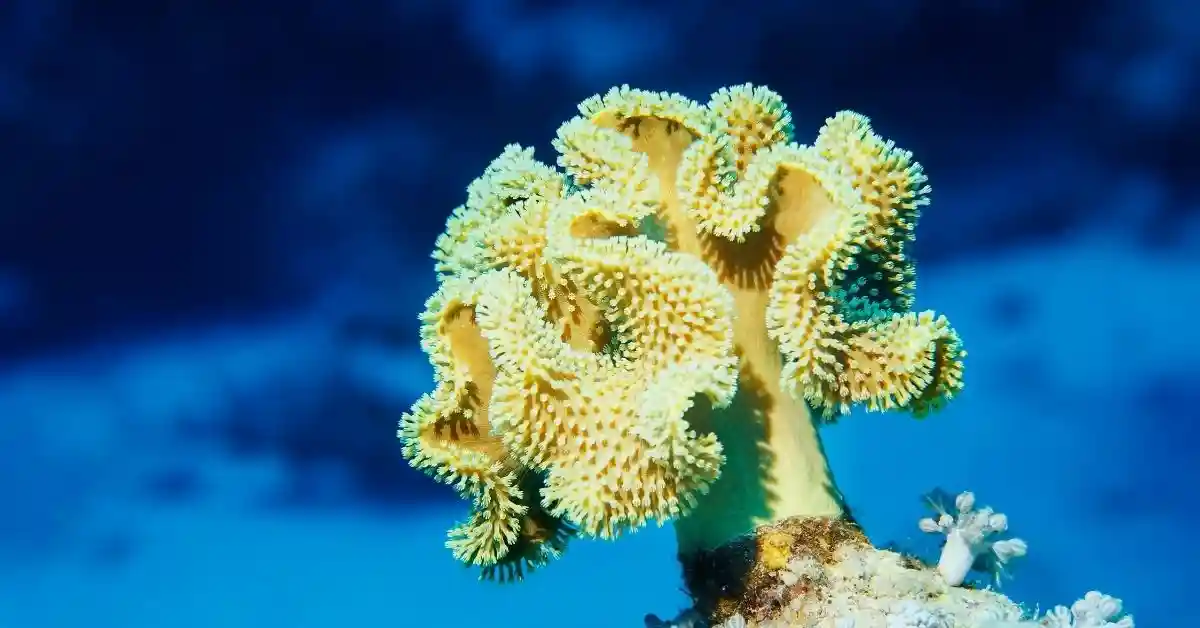Leather corals are beautiful corals for your tank. But sometimes, they die an untimely death. But sulking will not save your coral. It would be best if you found out the reasons.
Why are your leather corals dying?
Lack of proper lighting and water flow can be big reasons behind this. Sometimes losing flesh might lead to leather corals dying.
One symptom is they will slowly turn brown. Another reason might be coral bleaching or lack of polyp extension.
This much knowledge isn’t enough. That’s why we’ve collected the specific causes and reasons behind the issue.
So, spare us some time, and let’s get started-
5 Reasons Behind Your Leather Corals Dying
To save a plant, you need to know why it’s suffering. The same goes for the situation you and your leather corals are in.
But luckily, we’ve got why your leather corals may be in the state they are. They are mentioned below with their solutions-
Reason 1: Lack Of Proper Light and Flow
If you go too low light or too low flow, they will die. You can give other corals low light and low flow because of the shipping stress.
But this one is exceptional. Leather corals always demand high light and high flow.
Solution: Provide the Correct Lighting and Flow
Start by changing the low water flow to moderate. And for lighting, it should be mild to average illumination. More specifically, Toadstool Leather corals need PAR 80-250.
You can provide such light requirements with T5s, metal halides, and LEDs. They can all help to develop leather corals properly.
Make sure to provide the proper PAR levels. A 14-20K color spectrum for the optimum colors is recommended.
Plus, you may have bio-cube LEDs. If yes, try to upgrade the cube LED lights. This will be beneficial.
Reason 2: Losing Flesh
This situation is also known as tissue necrosis. It classifies as either Rapid Tissue Necrosis (RTN) or Slow Tissue Necrosis (STN).
In RTN, a coral’s tissue is usually lost within 24 hours. STN might take days, weeks, or even months to complete. Tissue necrosis in corals may be caused by the following reasons-
- If changes in alkalinity occur suddenly.
- Low alkalinity regularly
- A significant change in salinity
- Temperature swings of a significant magnitude, either up or down
Solution: Limit the Damage
Slow tissue necrosis is extremely tough to stop. Moreover, with fast tissue necrosis, it is impossible to stop it. But here are some suggestions for limiting the damage-
- Check temperature, salinity, alkalinity, and pH. Test every day until the problem is fixed.
- Cut the coral’s infected area(s). Cut into the good coral flesh above or below the injured area. It will stop the necrosis from spreading.
Reason 3: High Levels of Nutrients
The overproduction of zooxanthellae within the tissue of a leather coral causes it to become brown.
As zooxanthellae levels rise, they obstruct the leather coral’s natural colors.
Due to this, it turns brown and dies. For this similar reason, your dying torch coral might also turn brown.
High quantities of nutrients, such as nitrates and phosphates, are usually to blame. These nutrients provide nourishment for zooxanthellae. It causes them to overproduce.
Solution: Fix the Nitrate and Phosphate Levels
Before anything, remember the following-
Nitrates should be kept between 0.025 and 5.0 ppm. Phosphates should be between 0.02 and 0.05 ppm.
Regular water changes will aid in the reduction of excessive nitrate and phosphate levels. Adding a biopellet or GFO reactor may also assist in lowering these levels. It maintains them below acceptable limits.
Testing and maintaining important tank characteristics regularly is critical. If they begin to turn brown, gradually raise them in the tank. Increase the light intensity until they are satisfied.
Reason 4: Coral Bleaching
Bleaching occurs when the tissue of a coral starts to lose color. The tissue becomes transparent or white. A coral’s bleaching may be caused by various factors, including-
- High temperatures may cause the coral to lose its zooxanthellae, making it white.
- The lighting is very harsh.
- Significant changes in salinity, alkalinity, and pH in the tank.
- Nitrate and phosphate levels are too low or excessively high.
Solution: Fix the Water Parameters
The solution is fixing the water parameters. You have to change them according to the plant’s needs.
Reason 5: Insufficiency of Polyp Extension
When leather coral is pleased, its polyps expand and move with the current.
But when a leather coral is agitated, it will have decreased polyp extension or none. This later causes it to die.
Various factors may cause a lack of polyp extension-
- Unstable water characteristics
- Water flow is restricted.
- An excessive amount of water is flowing.
- The leather coral is irritated by parasites and other pests.
- Nipping at the coral by fish
All of this can cause green star polyps to die. If this is the reason, take action quickly.
Solution: Inspect and Fix
Check all water parameters regularly to ensure consistency and within range. Ensure that the coral is placed where it will get the necessary flow.
Remember, soft corals and LPS corals need low to moderate flow. SPS corals require a greater flow. So, fix everything accordingly.
If any parasites are discovered, remove, quarantine, and cure the coral.
Be sure only to put in reef-safe tank dwellers. Many fish may nibble at specific corals, making them unsuitable for reef aquariums.
Last but not least, always know what threatens coral reefs. This way, you will be able to keep them safe!
FAQs
Question: Why my leather coral is turning brown color?
Answer: Corals generally become brown due to an abundance of zooxanthellae in their tissues. The zooxanthellae suppress the coral’s natural colors, turning it brown.
Question: What is the lifespan of leather corals?
Answer: Corals can live for a long time. Some leather corals live more than 100 years. But only this is possible if they are taken care of properly.
Question: Do leather corals transmit poisons into the environment?
Answer: Sarcophyton produces and emits toxins like terpenoids. These substances will stunt the growth of surrounding corals. It harms other corals that are more vulnerable.
Conclusion
That’s it! We’ve run out of words. Hopefully, this article may help you understand why your leather corals are dying.


